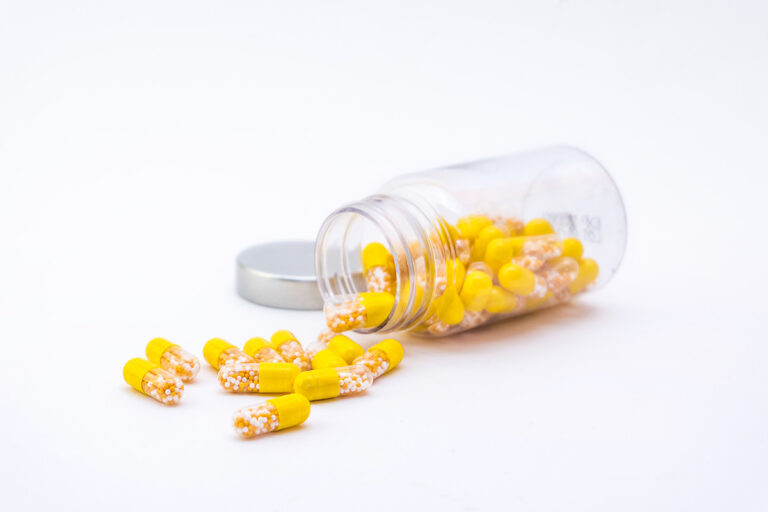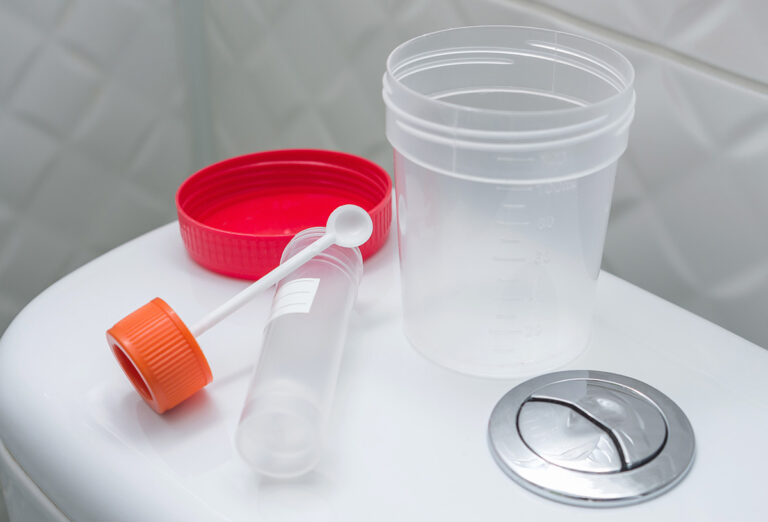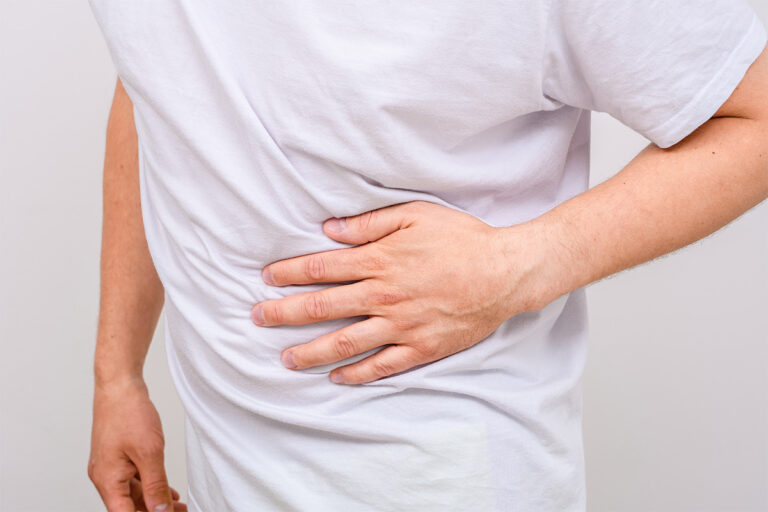What is chamomile?
You may have heard of chamomile tea, but what is chamomile, and what is it good for? Chamomile is an ancient medicinal plant species from the Asteraceae family of flowering plants that provides a number of health benefits. It has thin spindly shaped roots, an erect stem, and a flower head that looks similar to white and yellow daisies. The chamomile flower’s yellow center is flat in the start of its growth and cone-shaped and hollow later on. (18) Native to Southern and Eastern Europe, the chamomile plant has been around for thousands of years and was used as a medicinal herb by Ancient Egyptian, Greek, and Roman civilizations. The plant was brought to India 300 years ago and the country continues to be a large producer of chamomile products. Presently, chamomile grows in Australia, Africa, North America, Europe, and several other parts of the world. (18)
Chamomile flowers may look like daisies but their cone-shaped centers set them apart. (18)
Did you know? The chamomile plant can thrive in what’s often considered poor soil conditions. (18)
5 Chamomile health benefits
The two most common types of chamomile used for therapeutic purposes today are German chamomile (Chamomilla recutita) and Roman chamomile (Chamaemelum nobile). The chamomile flower can be processed to create a dry chamomile powder, chamomile tea, and chamomile extracts such as essential oils. (9)(18)Chamomile contains a wide variety of bioactive compounds including sesquiterpenes, flavonoids, coumarins, and polyacetylenes. Many of the bioactive compounds found in chamomile act as antioxidants in the body. Additionally, more than 120 chemical constituents (e.g., terpenoids, flavonoids) have been identified in chamomile as secondary metabolites—organic compounds produced by bacteria, plants, or fungi. Many of these components are antimicrobial (destroy microorganisms) or fungistatic (inhibit growth of a fungus). (18)Did you know? Essential oils are concentrated aromatic oils extracted from the bark, leaves, stems, fruit, and/or flowers of plants. (7)
1. Boosts mental wellness
Chamomile may reduce feelings of anxiety and depression, however further well-controlled research studies are needed in this area. (2)(3) A 2013 study that included 90 female students experiencing physical and emotional disturbances related to premenstrual syndrome (PMS) compared the efficacy of chamomile extract to mefenamic, a pain medication. After two months, the women who consumed chamomile experienced significantly less emotional disturbances compared to those who had been taking mefenamic, however; physical disturbances were not significantly different between groups. (15) A systematic review and meta-analysis of 12 randomized trials examined whether chamomile was effective for treating generalized anxiety disorder (GAD), state anxiety, sleep quality, and insomnia. Results showed that chamomile may be safe and effective for GAD and sleep quality. However, there was little evidence to support its efficacy for lessening state anxiety and insomnia, and further research is necessary. (10)2. Induces sleep and relaxation
Often when we think of what chamomile tea is good for, its ability to improve sleep quality and promote relaxation comes to mind. Many people find that drinking chamomile tea before bed helps them relax and get a better night’s sleep. But does the evidence support these effects? The sedative effects felt by many after drinking chamomile tea may be due to apigenin, a flavonoid that some studies have found binds to benzodiazepine receptors in the brain. (16) Benzodiazepine receptors are part of the gamma-aminobutyric acid (GABA) receptor complex and when they’re activated promote an inhibitory effect on the central nervous system. Certain medications prescribed to reduce anxiety and promote sleep are classified as benzodiazepines and bind to GABA receptors. (4)(9)(13) A Tehran University of Medical Sciences study found that the sleep quality of 80 elderly people improved after four weeks of consuming chamomile extract. (1) Similarly, a small study examined the sleep quality of 80 postnatal women having difficulty sleeping and determined that after two weeks of consuming chamomile tea, their sleep quality and mood had improved significantly compared to the control group. (5)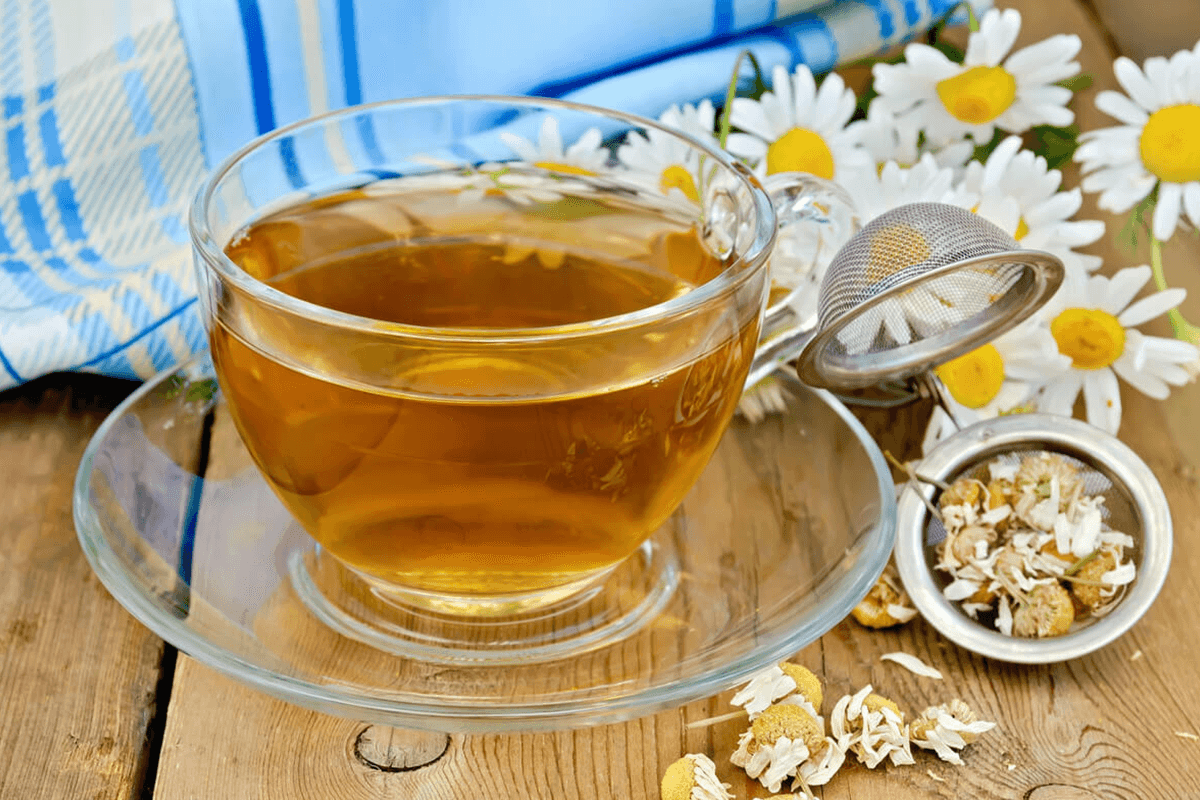
Chamomile tea is often made using the dried flowers of the chamomile plant but fresh chamomile flowers can also be used.
3. Reduces pain
The anti-inflammatory effects of chamomile flowers may help reduce certain types of physical pain. Chamomile has traditionally been used to help reduce pain in those experiencing headaches, rheumatic (joint) pain, menstrual pain, and other inflammatory-related symptoms. (9) Chamomile may help alleviate certain symptoms of premenstrual syndrome (PMS). (11) PMS is a set of physical and emotional symptoms that occur during the luteal phase of the menstrual cycle, such as fatigue, abdominal pain, back pain, headache, breast tenderness, anxiety, depression, and irritability. (8) A systematic review that examined eight studies on the effects of chamomile on PMS symptoms determined that chamomile (i.e., extract, capsules, oil, or tea) has anti-inflammatory, sedative, anti-anxiety, and antispasmodic effects that may help relieve pain and unwanted psychological aspects of PMS. (11) A 2015 study published in the Journal of Complementary Therapies in Clinical Practice determined that topical application of chamomile oil significantly decreased the need for patients with knee osteoarthritis to take acetaminophen (Tylenol) for pain. (17)4. Promotes wound healing and skin health
Chamomile essential oil, applied topically in a lotion or in combination with a carrier oil, may help to reduce a skin rash. It may also reduce breakouts thanks to its anti-inflammatory and antibacterial properties. In addition, chamomile products may be helpful in reducing symptoms associated with gout, atopic dermatitis (eczema), hemorrhoids, and ulcers. (9) Chamomile may be more effective than hydrocortisone cream for healing certain skin lesions. A 2011 Iranian study compared the efficacy of a German chamomile compress to topical steroids on peristomal (the skin surrounding) skin lesions in 72 patients who had received a colostomy, a procedure that creates an opening in the stomach for the large intestine. Results demonstrated that the peristomal skin lesions treated with the chamomile solution healed (resolved) significantly faster than those treated with the medical hydrocortisone cream. (6) An animal study examined the application of german chamomile oil on mice with atopic dermatitis-like changes in immune function compared with jojoba oil for four weeks. Atopic dermatitis is an inflammatory condition that causes itchy skin lesions. Results showed that the chamomile oil mice group had lower levels of blood IgE and IgG1, antibodies that may be elevated for individuals with inflammatory conditions such as atopic dermatitis. (12)5. Improves digestion
Chamomile products may help alleviate digestive symptoms such as an upset stomach, colic, cramping, flatulence, and diarrhea. (9) An animal study that examined the use of oral chamomile oil in rats with diarrhea (induced with castor oil) determined that the rats who consumed the chamomile had less symptoms associated with diarrhea, suggesting that chamomile may have antidiuretic properties. (14)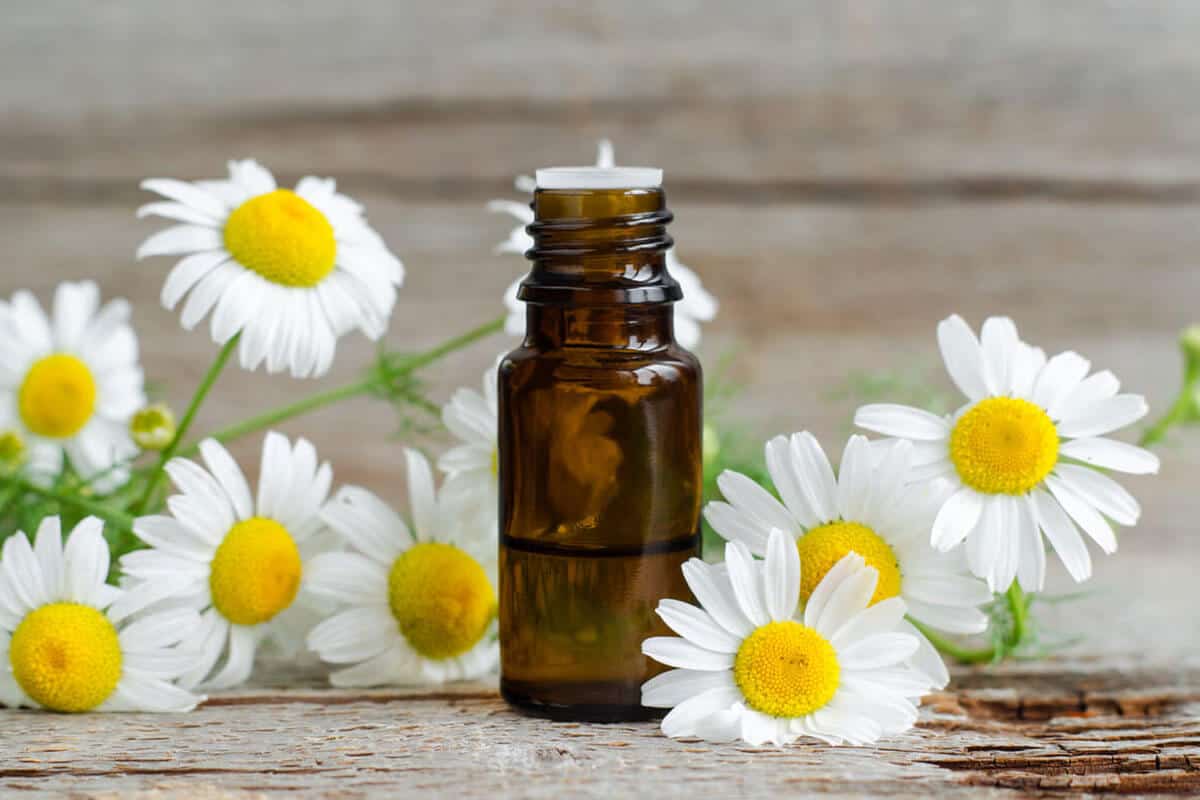
Chamomile is used to make tea, essential oils, supplements, and may be added to self-care products such as facial cleansers.
How to use chamomile
There are many ways to consume chamomile in order to benefits from its therapeutic properties, including:- Drinking chamomile tea, made by steeping dried or fresh chamomile leaves in boiling water
- Inhaling chamomile essential oil by diffusing it into the air
- Applying the essential oil topically as a part of a cream or ointment
- Taking chamomile supplements (e.g., capsules) with the guidance of your integrative health practitioner
The bottom line
Chamomile has been used for centuries to support people with a variety of health concerns, including pain, skin health, wound healing, digestion, sleep, and mental wellness. If you have seasonal allergies to ragweed or flowers in the daisy family, you may experience an allergic reaction to chamomile. Be sure to consult with your qualified medical practitioner before incorporating chamomile into your diet or self-care routine.Help more patients.
right in your Fullscript account!
New to Fullscript? Sign up now.
- Abdullahzadeh, M., Matourypour, P., & Naji, S. A. (2017). Investigation effect of oral chamomilla on sleep quality in elderly people in isfahan: A randomized control trial. Journal of Education and Health Promotion, 6(53).
- Amsterdam, J. D., Li, Y., Soeller, I., Rockwell, K., Mao, J. J., & Shults, J. (2009). A randomized, Double-Blind, Placebo-Controlled trial of oral matricaria recutita (chamomile) extract therapy for generalized anxiety disorder. Journal of Clinical Psychopharmacology, 29(4), 378–382.
- Amsterdam, J. D., Shults, J., Soeller, I., Mao, J. J., Rockwell, K., & Newberg, A. (2012). Chamomile (matricaria recutita) may have antidepressant activity in anxious depressed humans – an exploratory study. Altern Ther Health Med, 18(5), 44–49.
- Benzodiazepine Receptor – an overview. (n.d.). ScienceDirect. https://www.sciencedirect.com/topics/neuroscience/benzodiazepine-receptor
- Chang, S. M., & Chen, C. H. (2015). Effects of an intervention with drinking chamomile tea on sleep quality and depression in sleep disturbed postnatal women: A randomized controlled trial. Journal of Advanced Nursing, 72(2), 306–315.
- Charousaei, F., Dabirian, A., & Mojab, F. (2011). Using chamomile solution or a 1% topical hydrocortisone ointment in the management of peristomal skin lesions in colostomy patients: Results of a controlled clinical study. Ostomy/Wound Management, 57(5), 28–36.
- Essential oils. (2021). National Institute of Environmental Health Sciences. https://www.niehs.nih.gov/health/topics/agents/essential-oils/index.cfm
- Gudipally, P. R. (2021). Premenstrual syndrome. PubMed. https://pubmed.ncbi.nlm.nih.gov/32809533/
- Gupta. (2010). Chamomile: A herbal medicine of the past with a bright future (review). Molecular Medicine Reports, 3(6).
- Hieu, T. H., Dibas, M., Surya Dila, K. A., Sherif, N. A., Hashmi, M. U., Mahmoud, M., Trang, N. T. T., Abdullah, L., Nghia, T. L. B., Y, M. N., Hirayama, K., & Huy, N. T. (2019). Therapeutic efficacy and safety of chamomile for state anxiety, generalized anxiety disorder, insomnia, and sleep quality: A systematic review and meta‐analysis of randomized trials and quasi‐randomized trials. Phytotherapy Research, 33(6), 1604–1615.
- Khalesi, Z. B., Beiranvand, S. P., & Bokaie, M. (2019). Efficacy of chamomile in the treatment of premenstrual syndrome: A systematic review. Pharmacopuncture, 22(4), 204–209.
- Lee, S. H., Heo, Y., & Kim, Y. C. (2010). Effect of german chamomile oil application on alleviating atopic dermatitis-like immune alterations in mice. Journal of Veterinary Science, 11(1), 35–41.
- Savage, K., Firth, J., Stough, C., & Sarris, J. (2017). GABA-modulating phytomedicines for anxiety: A systematic review of preclinical and clinical evidence. Phytotherapy Research, 32(1), 3–18.
- Sebai, H., Jabri, M. A., Souli, A., Rtibi, K., Selmi, S., Tebourbi, O., El-Benna, J., & Sakly, M. (2014). Antidiarrheal and antioxidant activities of chamomile (matricaria recutita L.) decoction extract in rats. Journal of Ethnopharmacology, 152(2), 327–332.
- Sharifi, F., Simbar, M., Mojab, F., & Majd, H. A. (2014). Comparison of the effects of matricaria chamomila (chamomile) extract and mefenamic acid on the intensity of premenstrual syndrome. Complementary Therapies in Clinical Practice, 20(1), 81–88.
- Shinomiya, K., Inoue, T., Utsu, Y., Tokunaga, S., Masuoka, T., Ohmori, A., & Kamei, C. (2005). Hypnotic activities of chamomile and passiflora extracts in Sleep-Disturbed rats. Biological and Pharmaceutical Bulletin, 28(5), 808–810.
- Shoara, R., Hashempur, M. H., Ashraf, A., Salehi, A., Dehshahri, S., & Habibagahi, Z. (2015). Efficacy and safety of topical matricaria chamomilla L. (chamomile) oil for knee osteoarthritis: A randomized controlled clinical trial. Complementary Therapies in Clinical Practice, 21(3), 181–187.
- Singh, O., Khanam, Z., Misra, N., & Srivastava, M. (2011). Chamomile (matricaria chamomilla L.): An overview. Pharmacognosy Reviews, 5(9), 82–95.



